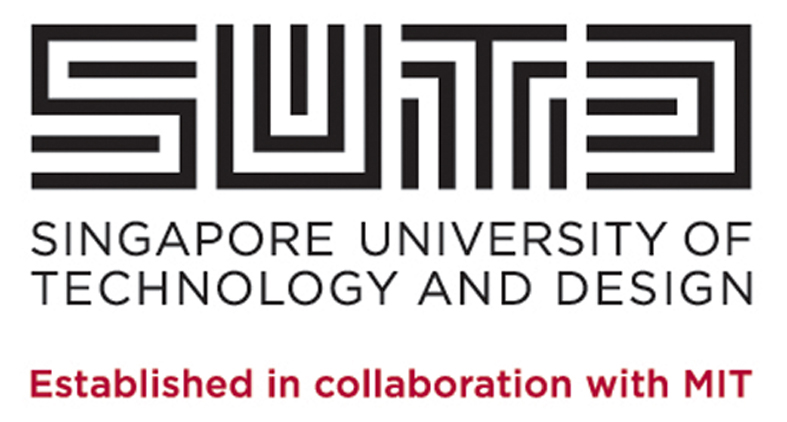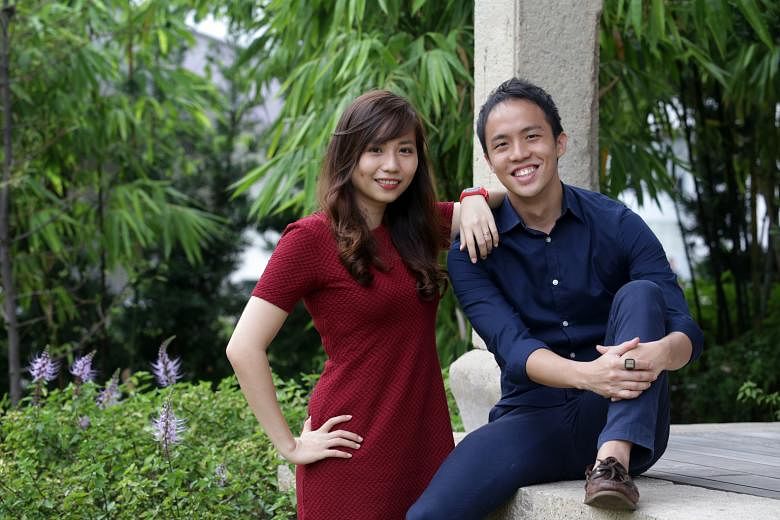As exchange students overseas, there is a tendency to relax and have fun.
But on the very first day two Singapore University of Technology and Design (SUTD) second-year students arrived at the Massachusetts Institute of Technology (MIT), they went to its International Design Centre (IDC) to create a prototype - a ring that could be used like an ez-link card.
They soon founded Ring Theory, and now, 31/2 years later, the firm counts banks, the public transport authorities and wearable tech companies among its customers.
Said co-founder Olivia Seow, who went through SUTD's engineering product development specialisation: "It was an adventure that was at times difficult and overwhelming, and I am proud of what we have created."
The idea was sparked in 2011 outside MRT gantries, as she frantically searched her bag for her ez-link card while her friends waited inside.
Before starting her studies at SUTD, she attended a workshop sponsored by the university and there, paired up with co-founder and current company director Edward Tiong, who also went through SUTD's engineering systems and design specialisation.
After that, the pair - who were in SUTD's pioneer batch - decided to work on the ring project together.
Things moved quickly. In their first academic year, they sold rings to SUTD to use as access devices.
In their second year, they jetted to MIT on a three-month exchange programme and, within three weeks, snagged their second customer - the Massachusetts Bay Transportation Authority- in a partnership that continues today.
By then, their short exchange had ended, and they set up Ring Theory in Singapore to handle their new orders.
The company has since grown from strength to strength. It now mostly works directly with other businesses, producing watches, necklaces and wristbands that have a range of micro-payment, security and ticketing applications.
Throughout, the two said they owe much to SUTD's approach to solving problems: design thinking.
Design thinking, according to Mr Tiong, 26, trains one to look at problems in a step-by-step process with mental tools that encourages lateral thinking and creativity.
"If you're not equipped with all these tools and methodologies... You might jump steps and reach a solution without generating it coherently," he said.
"These tools help you build up your solution from the problem."
Said Ms Seow, 25: "Design thinking helps in generating unexpectedly delightful solutions."
She said that it has so influenced the way she thinks that she no longer knows what conventional problem-solving is.
Ms Seow, as a Spring Singapore scholarship holder, stopped playing an active role in Ring Theory after graduating and joining the government agency.
The manager in the statutory board's partnership office still fondly remembers the many ways SUTD helped during her entrepreneur days.
She rattled off a long list of staff and faculty members who gave their time, from the librarian who introduced the pair to her industry contacts, to a professor who, after lectures, helped them with their research until about 10pm.
Such is the university's belief in their idea that the alumni's rings are still displayed in the SUTD-MIT International Design Centre on campus, and it produces hundreds of them yearly to distribute to each new batch of undergraduates.
For work, Mr Tiong now shuttles between JTC LaunchPad @ one-north, a start-up enclave, and the SUTD-MIT IDC, and said that the university is still sharing their products with anyone who is interested.
When asked about Ring Theory's financial progress, Mr Tiong hesitated. After a pause, he said he did not want to talk about money.
"There is too much at risk when you start a business or engage in entrepreneurship, that if you're motivated by money alone, you'll most likely not be able to go through the years and all the pain and suffering.
"You should be motivated by the passion or the drive to solve a certain problem, of being interested in this sort of lifestyle where you innovate and you create solutions for people."
He said that while he was proud that SUTD continued to feature Ms Seow's and his work, one of their aims was to inspire students to create anything they want.
"There will be some time - and I hope it's soon - that another project comes and eclipses ours."
The pair are clearly grateful to SUTD for the support it gave them, but there is one more thing that happened because of their time together in university.
It, too, involves a ring.
Last month, Mr Tiong asked Ms Seow if she would be his girlfriend. He then immediately asked her if she would marry him.
With their tech background, it is apt that a slim, 3D-printed rose gold ring adorns Ms Seow's finger.
Despite having known each other for about five years, they were never officially a couple. "I didn't want to put a label on it," said Mr Tiong.
The couple feel they have learnt immensely through their journey, and when discussing the future, Ms Seow is optimistic.
"Running your own company successfully is certainly not easy, and our culture does not always reward trying and failing.
But I want to show others that it can be rewarding to take a step out into the unknown and work on an innovative product or offering of their own... That has always been my passion."
Brought to you by



